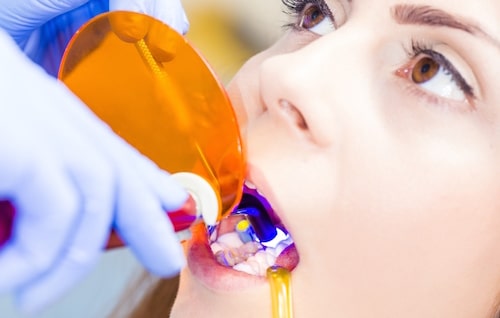When the phrase “cosmetic dentistry” is used, most people think of teeth whitening or invisible braces that give the mouth and the teeth a more aesthetically pleasing appearance. While it is true that these procedures can give a person a more pleasing appearance to the mouth such as a brighter smile, cosmetic dentistry also has functional benefits that help patients enjoy teeth and gums that work properly when it comes to chewing food. Let’s take a look at how aesthetic cosmetic dentistry and functional cosmetic dentistry treatments improve the overall appearance and function of the teeth and gums of a patient.
 Composite Fillings – These fillings are created to resemble the natural color of the teeth of a patient. Composite fillings are an ideal option to restore teeth that are classified as being cracked or decayed. This cosmetic dentistry technique uses resin material to replace the damaged part of the tooth because this material is able to withstand the moderate pressure that results from chewing food on a regular basis.
Composite Fillings – These fillings are created to resemble the natural color of the teeth of a patient. Composite fillings are an ideal option to restore teeth that are classified as being cracked or decayed. This cosmetic dentistry technique uses resin material to replace the damaged part of the tooth because this material is able to withstand the moderate pressure that results from chewing food on a regular basis.Patients that are interested in undergoing any of the above treatments are advised to schedule a consultation appointment with a board-certified cosmetic dentist that is experienced in performing the above cosmetic dentistry procedures. The dentist will examine the teeth and gums of the patient to determine the amount of current damage to the teeth as well as choose the ideal treatment option that will provide long-lasting functional cosmetic dentistry and aesthetic cosmetic dentistry results.
MA